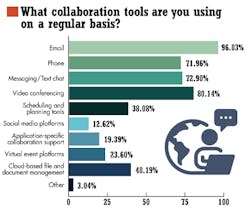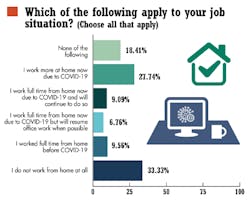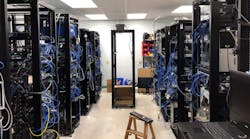This article is part of the Professional Advancement Series: Annual Salary Survey
Elon Musk’s takeover of Twitter has been one of the most anticipated and discussed near-term events. Musk’s actions after the acquisition have substantially changed the company, including firing a significant portion of its staff and implementing requirements such as forcing office work with minimal exceptions.
Our annual Salary Survey indicated that over three-quarters of the companies were more focused on employee retention than last year. Twitter obviously isn’t as interested in overall retention at this point and many other tech companies have announced significant layoffs or planned layoffs.
Twitter’s potential implosion will have a major overall effect on social media, but social media is a small fraction of the collaboration tools being used by engineers and programmers in general (Fig. 1). Twitter is only one of many social-media platforms mentioned in the survey. We also found that more than three-quarters of the respondents were using collaboration tools with vendors and third-party companies. Likewise, using these collaboration tools is on the rise.
One of Musk’s other changes is an across-the-board return to the office with few exceptions. COVID-19 turned work-from-home from an exception, at less than 10%, to the norm (Fig. 2). Many jobs can’t be done remotely; however, in our industry, a majority of chores are able to be handled remotely. In general, a reduction in distractions thanks to working from home has improved efficiency once participants are provided with master collaboration tools. These are even useful if workers are in an office.
For example, tools like Zoom and Microsoft Teams have moved to the forefront due to the dominance of remote work. It also has changed the way marketing, engineers, and programmers interact. For example, it has made it very easy for us at Electronic Design to provide video interviews because the use of video conferencing has become ubiquitous.
Preparation and support are key to the success of remote work. For example, Green Hills Software had already been working on a hardware testing farm that was designed for remote operation (Fig. 3). This is akin to the dark factory or dark warehouse, where robots are remotely managed. Likewise, digital twins are designed to provide remote tracking and management of real hardware. There are many benefits to this approach that essentially complement remote work.
Work-from-home is a benefit being sought by many engineers and programmers who are changing jobs, and it’s an option offered by numerous companies. This could be one aspect triggering the migration of technical employees away from Twitter. Moving toward new opportunities is something many such employees are looking for; moving away from a “challenging” work environment is another.




